Clever Creature: Photos of the California Two-Spot Octopus
Scientists have sequenced the first genome of a cephalopod, the group that contains octopuses, squids and cuttlefish, which are considered the world's most intelligent invertebrates. The gene codes reveal more about the California two-spot octopus' complex brain and ability to transform its skin color to blend in with surroundings. Check out these amazing images of the brainiac of the sea.
Good morning
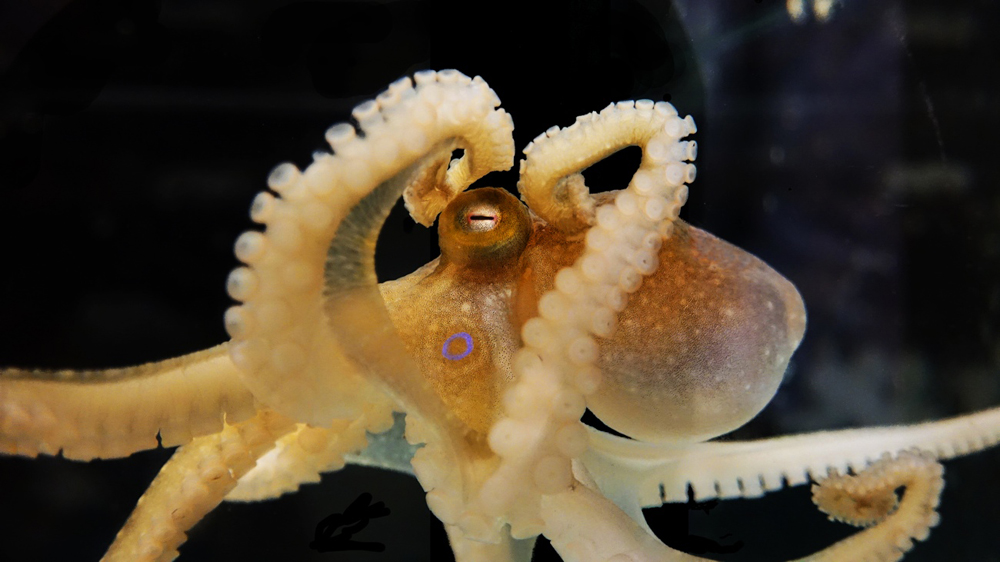
Researchers from University of California Berkeley, the Okinawa Institute of Science and Technology Graduate University and the University of Chicago have sequenced the first cephalopod genome -- that of the California two-spot octopus (Octopus bimaculoides). Here, the two-spot octopus shows off its blue eyespot and long, flexible arms, which are covered in suckers. (Credit: Judit Pungor.)
A unique creature
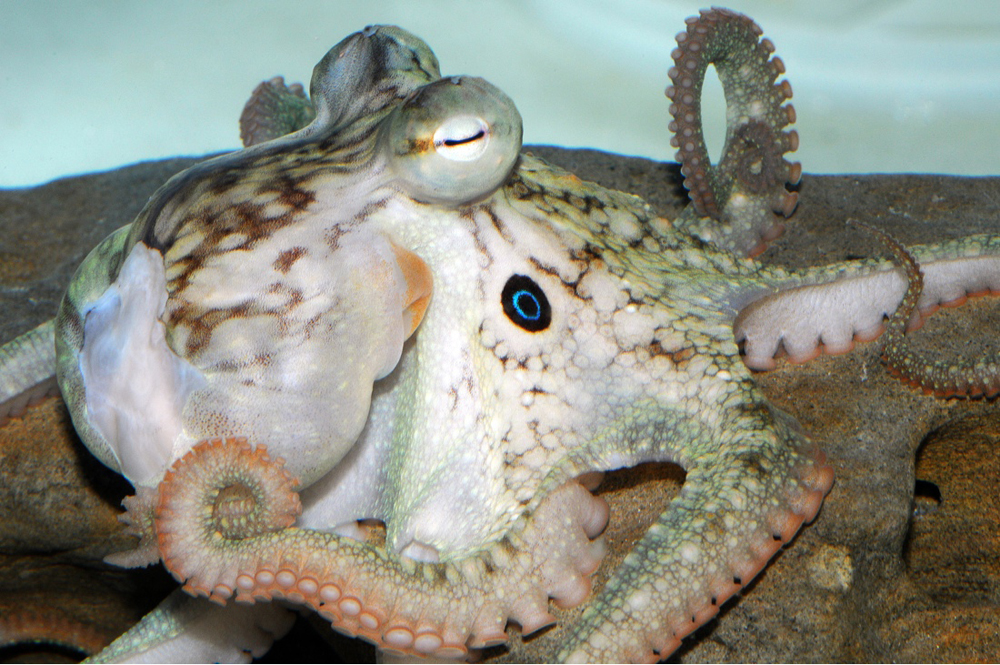
The California two-spot octopus, Octopus bimaculoides, has two distinctive blue eyespots -- one on either side of its mantle. These fake peepers are meant to trick would-be predators, suggesting these actual eyes are watching them, according to the Monterey Aquarium. (Credit: Roy Caldwell/UC Berkeley.)
A new "Spot"
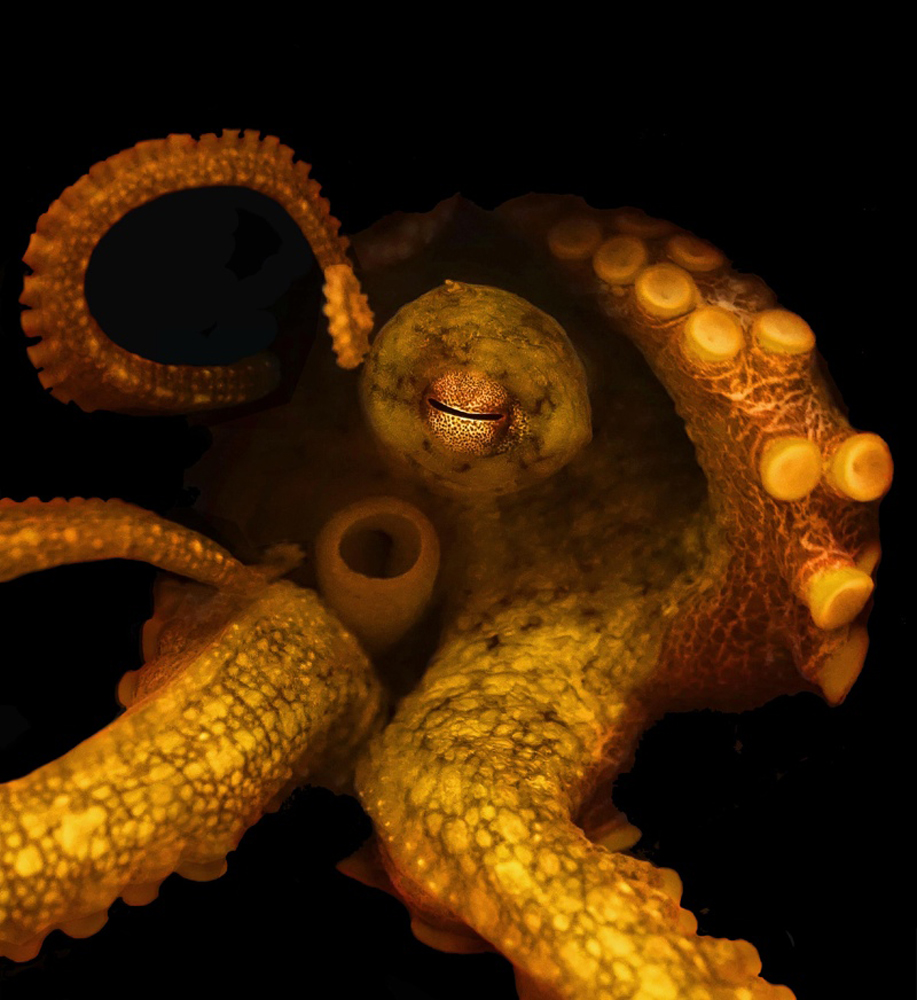
The two-spot octopus' genome revealed a set of genes expressed in the octopus' suckers that are similar to receptors for a neurotransmitter called acetylcholine. But the proteins made by the "sucker genes" can't bind to acetylcholine and instead the researchers suspect they are involved in the animal's ability to taste with its suckers. (Credit: Judit Pungor.)
Sign up for the Live Science daily newsletter now
Get the world’s most fascinating discoveries delivered straight to your inbox.
Reaching for the top
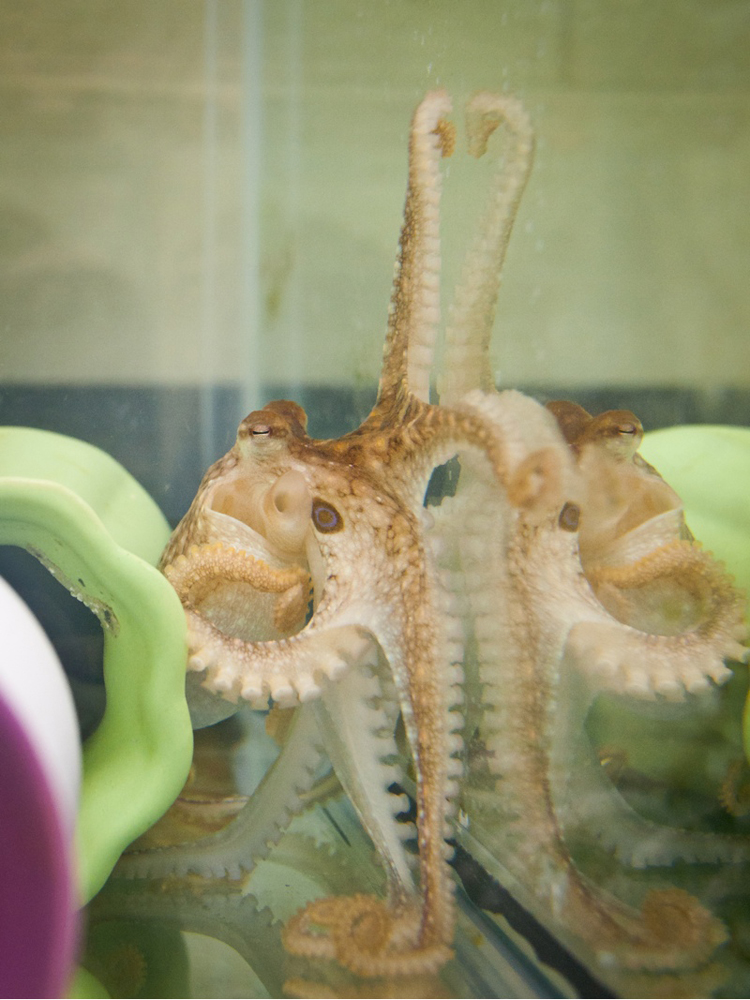
A juvenile California two-spot octopus reaches up with a long, sucker-lined arm. (Credit: Yen-Chyi Liu.)
Welcome to my home
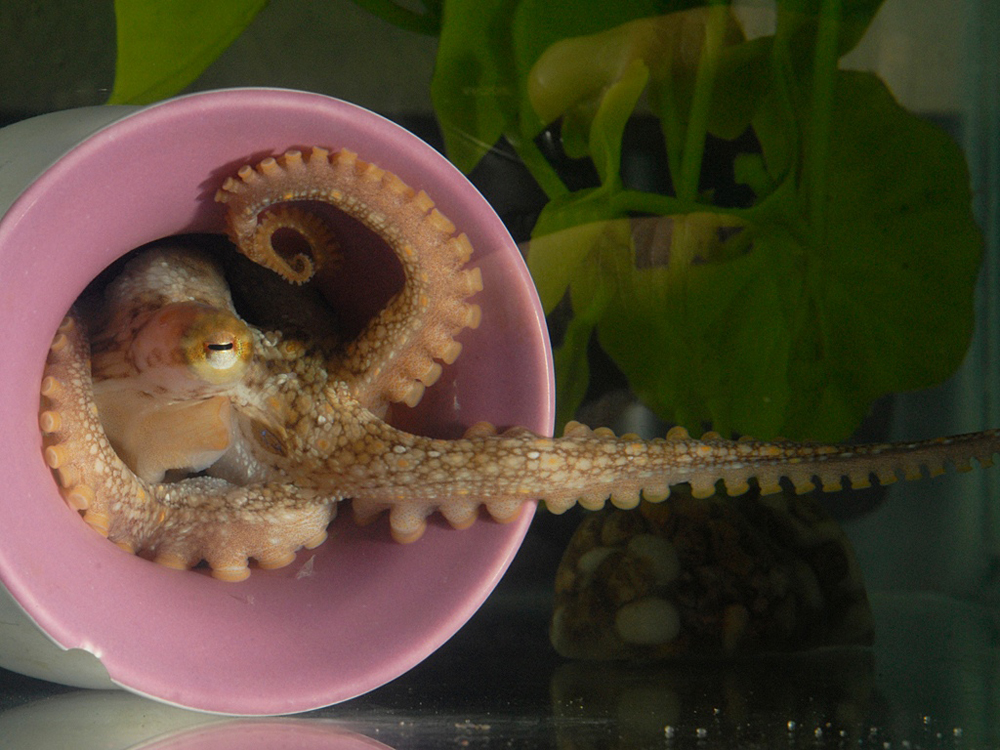
A California two-spot octopus (Octopus bimaculoides) extends a sucker-lined arm out of her den. (Credit: Michael LaBarbera.)
Getting some exercise
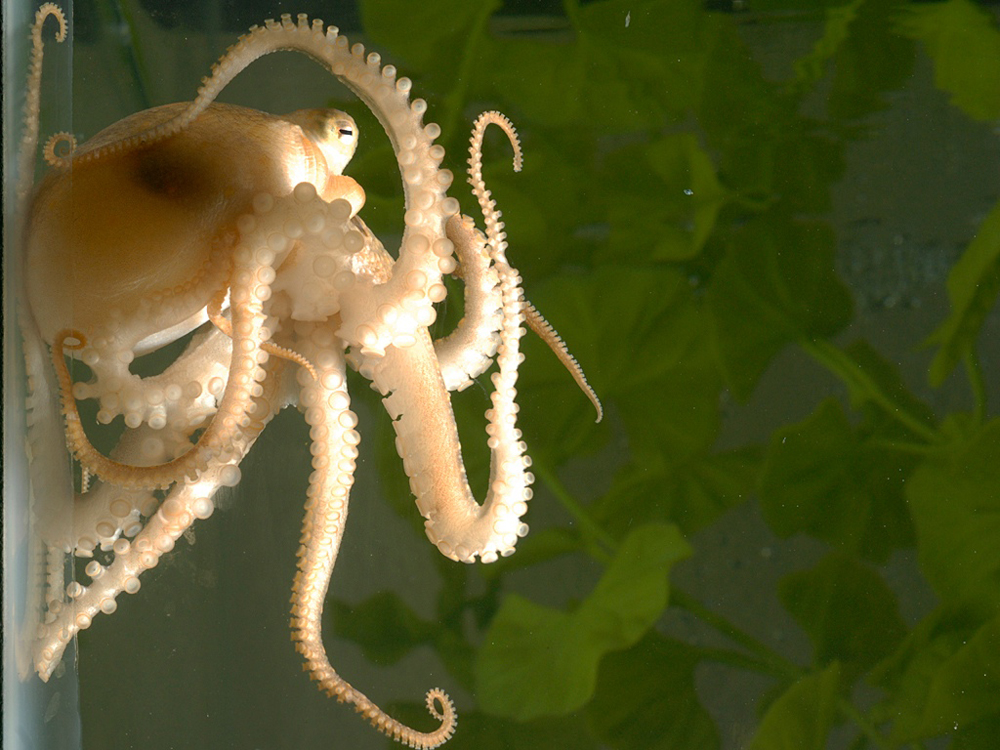
A juvenile California two-spot octopus (Octopus bimaculoides) holds onto the walls of her aquarium with her flexible, sucker-lined arms. (Credit: Michael LaBarbera.)
A distinctive mark
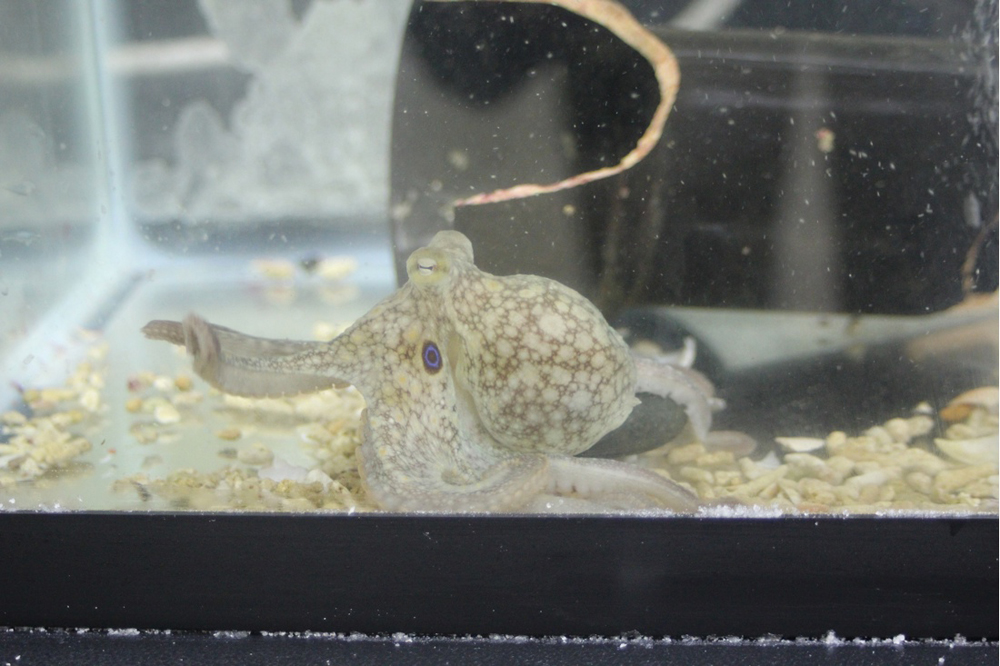
A juvenile California two-spot octopus (Octopus bimaculoides) explores her tank while displaying her namesake blue eyespot. (Credit: Caroline Albertin and Abigail Point.)
Hanging around
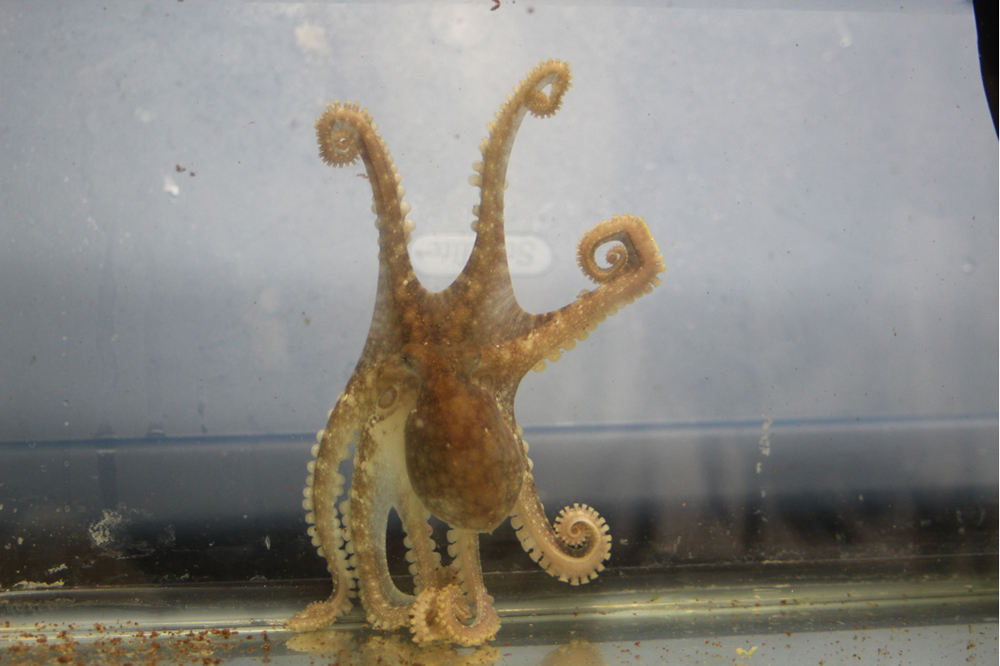
An Octopus bimaculoides clings to the wall of his aquarium using his sucker-lined arms and displays his blue eyespots. (Credit: Caroline Albertin and Abigail Point.)
Peek-a-boo
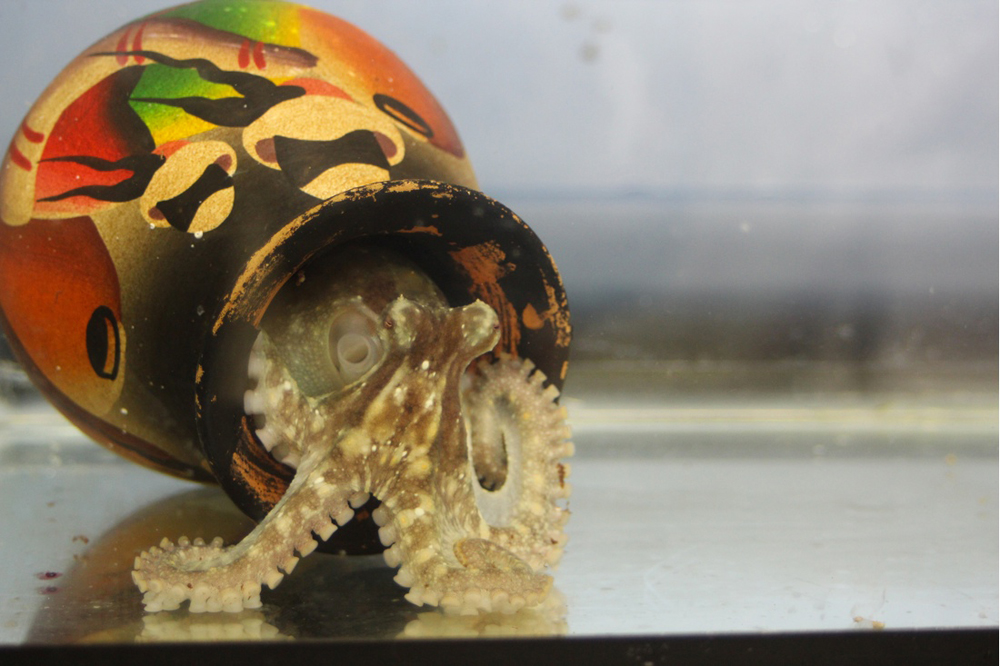
A young Octopus bimaculoides peers out of her den. (Credit: Caroline Albertin and Abigail Point.)
Jeanna Bryner is managing editor of Scientific American. Previously she was editor in chief of Live Science and, prior to that, an editor at Scholastic's Science World magazine. Bryner has an English degree from Salisbury University, a master's degree in biogeochemistry and environmental sciences from the University of Maryland and a graduate science journalism degree from New York University. She has worked as a biologist in Florida, where she monitored wetlands and did field surveys for endangered species, including the gorgeous Florida Scrub Jay. She also received an ocean sciences journalism fellowship from the Woods Hole Oceanographic Institution. She is a firm believer that science is for everyone and that just about everything can be viewed through the lens of science.









